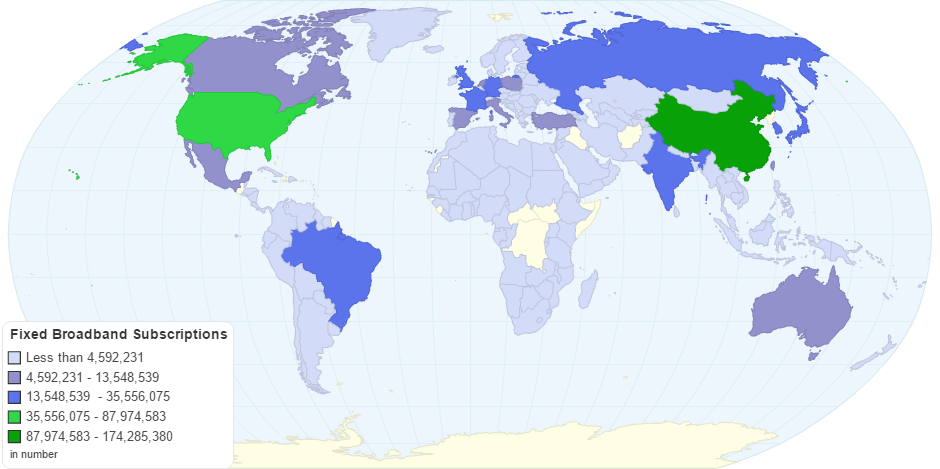This chart shows Fixed-broadband subscriptions by Country.
Fixed-broadband access refers to high-speed fixed access to the public Internet at downstream speeds equal to, or greater than, 256 kbit/s. This includes satellite Internet access, cable modem, DSL, fibre-to-the-home/building, and other fixed broadband subscriptions. The totals are measured irrespective of the method of payment.
In telecommunications, broadband is a wide bandwidth data transmission with an ability to simultaneously transport multiple signals and traffic types. The medium can be coaxial cable, optical fiber, radio or twisted pair.In the context of Internet access, broadband is used to mean any high-speed Internet access that is always on and faster than traditional dial-up access.
Internet access is the process that enables individuals and organisations to connect to the Internet using computer terminals, computers, mobile devices, sometimes via computer networks. Once connected to the Internet, users can access Internet services, such as email and the World Wide Web. Internet service providers offer Internet access through various technologies that offer a wide range of data signaling rates.
The bit rates for dial-up modems range from as little as 110 bit/s in the late 1950s, to a maximum of from 33 to 64 kbit/s (V.90 and V.92) in the late 1990s. Dial-up connections generally require the dedicated use of a telephone line. Data compression can boost the effective bit rate for a dial-up modem connection to from 220 (V.42bis) to 320 (V.44) kbit/s.
Broadband technologies supply considerably higher bit rates than dial-up, generally without disrupting regular telephone use. Various minimum data rates and maximum latencies have been used in definitions of broadband, ranging from 64 kbit/s up to 4.0 Mbit/s.
9 years ago

